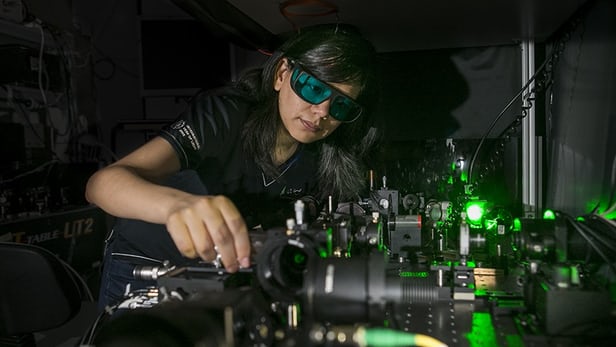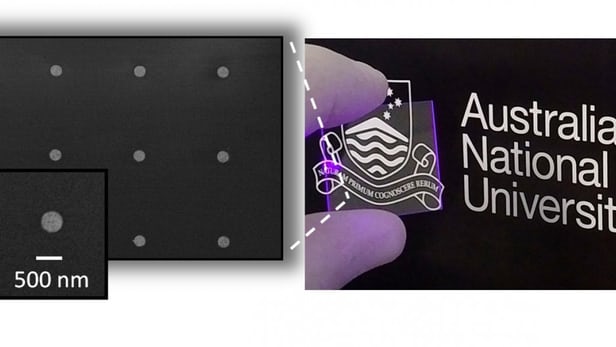Night vision goggles are beneficial in terms of countering the human eye’s poor ability to see in the dark. However, the devices are typically bulky and require several layers of lenses and a large amount of power. But now, thanks to research from the Australian National University (ANU), a new type of nanocrystal allows for night vision technology to be applied to a conventional pair of glasses without adding any weight.

Darkness is the absence of light on the visible spectrum that our eyes can detect. Night vision goggles use the near-infrared spectrum and convert photons from light into electrons that illuminate a phosphor screen inside the device to display the image. However, the result is a clunky, power-hungry device.
The team’s nanocrystal creates night vision products that do away with electricity completely by converting incoming photons from infrared light into photons on the visible spectrum, allowing the human eye to see in the dark.
“Current night vision glasses are a combination of optics and electronics,” Mohsen Rahmani, one of the researchers, said. “They receive the near-infrared spectrum, which is not visible, and convert photons to electricity. But with this technology, we don't need electricity anymore, we directly convert light to light, we just change the color and the frequency.”

In order for light to pass through, the nanocrystal was assembled on a plane of glass for the first time ever. Currently, the prototype has a single nanoparticle, 300 nanometers wide. Creating an array of millions of them would produce a metamaterial surface that could be applied to glass. Individual nanocrystals can be tuned to different frequencies, capturing as much light as possible and overcoming the challenge of efficiency on the nano scale.
“When you have millions of them, you have a lot of capability and a lot of room to work with all the colors and all the frequencies, and have a surface that can capture all this invisible light and convert it to the visible light,” Rahmani said.
The nanoparticle requires intense light to make the conversion, but the researchers are looking to develop them further to improve efficiency. These nanocrystals could find use in imaging cells, anti-counterfeiting applications, or for creating holograms.
The comprehensive research, published in the journal Nano Letters , can be found here.
Source: New Atlas
Advertisement
Learn more about Electronic Products Magazine





